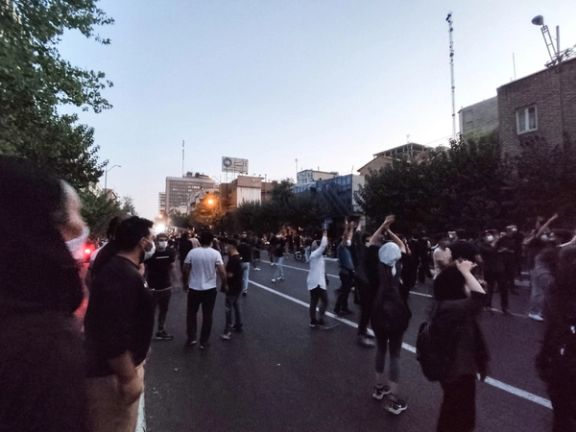Iran Continues Denial Of UN's Crimes Against Humanity Charges

Tehran is doubling down on its rejection of a UN report that found the regime committed crimes against humanity during its crackdown on nationwide protests.

Tehran is doubling down on its rejection of a UN report that found the regime committed crimes against humanity during its crackdown on nationwide protests.
The Secretary of Iran's High Council for Human Rights, Kazem Gharibabadi, accused Western countries of influencing the decisions of the United Nations’ Human Rights Council – and reiterated that the Council does not recognize the Council’s fact-finding mission.
The Iranian regime uses its High Council to defend itself against international criticism for human rights abuses.
“By complying with the political and mostly illegitimate demands of Western countries in 2023, the United Nations Human Rights Council has caused more suffering to the victims of human rights violations and become a tool for political interference [in other countries’ affairs,” Gharibabadi said in response to the UN fact-finding mission’s preliminary report published on March 8.
Established by the UN human rights council in November 2022, in response to the widespread Woman, Life, Freedom protests that engulfed the nation, the fact-finding mission primarily centers on Iran's nationwide 2022-2023 protests. Its experts have expressed regrets over the Iranian authorities' lack of meaningful cooperation, despite repeated requests for information, including details regarding the killing and injury of security forces, as well as their denial of access to the country and its people.
In contrast, Gharibabadi referred to the mandate of the fact-finding mission, claiming that Iran “deals responsibly” with matters related to “riots in the country” while underlining that President Ebrahim Raisi appointed a national committee to investigate the “riots.”
The country’s Supreme Leader Ali Khamenei, along with Iranian officials, have consistently dismissed the characterization of the uprising as peaceful, instead arbitrarily labeling protesters as "rioters" and accusing them of engaging in "terrorist acts."

Regime denies deliberately shooting protesters' faces
In November 2022, more than 370 ophthalmologists reported that numerous protesters struck by rubber bullets, metal pellets, and paintball bullets fired at close range during the protests were treated at medical centers. Many suffered permanent loss of eyesight in one or both eyes.
Backing up those reports, the fact-finding mission’s investigation found that “security forces used unnecessary and disproportionate force which resulted in the unlawful killing and injuries of protestors. A pattern of extensive injuries to protesters’ eyes caused the blinding of scores of women, men and children, branding them for life. The Mission also found evidence of extrajudicial killings.”
Moreover, the report highlighted that female protesters had been deliberately singled out due to their gender. They were subjected to close-range shootings aimed at their faces and genitals.
“A witness, who lost the sight in one eye, recalled a member of the security forces directing a paintball gun loaded with rubber bullets to the head from 1 m away. The mission notes the deterrent and chilling effect of such injuries, as they permanently marked the victims, essentially “branding” them as protesters. In a context where protests are effectively criminalized, the mission is satisfied that such an effect was intended,” the report read.
“These acts form part of a widespread and systematic attack directed against the civilian population in Iran, namely against women, girls, boys and men who have demanded freedom, equality, dignity and accountability,” said Sara Hossain, chair of the UN fact-finding mission.
Human rights organizations have compiled the names of at least 550 protesters, including 68 children, who were killed by security forces.
The full 400-page report is scheduled to be published on March 18th.